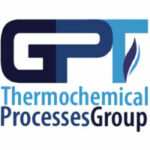ABOUT ME
Lorem ipsum dolor sit amet, consectetur adipiscing elit, sed do eiusmod tempor incididunt ut labore et dolore magna aliqua. Ut enim ad minim veniam, quis nostrud exercitation ullamco laboris nisi ut aliquip ex ea commodo consequat. Duis aute irure dolor in reprehenderit in voluptate velit esse cillum dolore eu fugiat nulla pariatur. Excepteur sint occaecat cupidatat non proident, sunt in culpa qui officia deserunt mollit anim id est laborum .Lorem ipsum dolor sit amet, consectetur.
Lorem ipsum dolor sit amet, consectetur adipiscing elit, sed do eiusmod tempor incididunt ut labore et dolore magna aliqua. Ut enim ad minim veniam, quis nostrud exercitation ullamco laboris nisi ut aliquip ex ea commodo consequat. Duis aute irure dolor in reprehenderit in voluptate velit esse cillum dolore eu fugiat nulla pariatur. Excepteur sint occaecat cupidatat non proident, sunt in culpa qui officia deserunt mollit anim id est laborum .Lorem ipsum dolor sit amet, consectetur.
Lorem ipsum dolor sit amet, consectetur adipiscing elit, sed do eiusmod tempor incididunt ut labore et dolore magna aliqua. Ut enim ad minim veniam, quis nostrud exercitation ullamco laboris nisi ut aliquip ex ea commodo consequat. Duis aute irure dolor in reprehenderit in voluptate velit esse cillum dolore eu fugiat nulla pariatur. Excepteur sint occaecat cupidatat non proident, sunt in culpa qui officia deserunt mollit anim id est laborum .Lorem ipsum dolor sit amet, consectetur.
PUBLICATIONS
2020
Atienza-Martínez, María; Suraini, Nurull Nadia Binti; Ábrego, Javier; Fonts, Isabel; Lázaro, Luisa; Carstensen, Hans-Heinrich; Gea, Gloria
Functionalization of sewage sludge char by partial oxidation with molecular oxygen to enhance its adsorptive properties Journal Article
In: Journal of Cleaner Production, pp. 125201, 2020, ISSN: 09596526.
@article{Atienza-Martinez2020b,
title = {Functionalization of sewage sludge char by partial oxidation with molecular oxygen to enhance its adsorptive properties},
author = {María Atienza-Martínez and Nurull Nadia Binti Suraini and Javier Ábrego and Isabel Fonts and Luisa Lázaro and Hans-Heinrich Carstensen and Gloria Gea},
url = {https://linkinghub.elsevier.com/retrieve/pii/S0959652620352458},
doi = {10.1016/j.jclepro.2020.125201},
issn = {09596526},
year = {2020},
date = {2020-11-01},
journal = {Journal of Cleaner Production},
pages = {125201},
publisher = {Elsevier},
keywords = {},
pubstate = {published},
tppubtype = {article}
}
2015
Atienza-Martínez, María; Fonts, Isabel; Lázaro, Luisa; Ceamanos, Jesús; Gea, Gloria
Fast pyrolysis of torrefied sewage sludge in a fluidized bed reactor Journal Article
In: Chemical Engineering Journal, vol. 259, pp. 467–480, 2015, ISSN: 13858947.
@article{Atienza-Martinez2015a,
title = {Fast pyrolysis of torrefied sewage sludge in a fluidized bed reactor},
author = {María Atienza-Martínez and Isabel Fonts and Luisa Lázaro and Jesús Ceamanos and Gloria Gea},
doi = {10.1016/j.cej.2014.08.004},
issn = {13858947},
year = {2015},
date = {2015-01-01},
journal = {Chemical Engineering Journal},
volume = {259},
pages = {467--480},
publisher = {Elsevier},
abstract = {The pyrolysis of dry and of torrefied sewage sludge in a lab-scale fluidized bed reactor has been studied in order to determine whether torrefaction pre-treatment could enhance the properties of the liquid product obtained after pyrolysis. The aim of this work is to evaluate the influence of the torrefaction temperature (220-320°C) and average solid residence time (3.6-10.2min) on the product distribution and the properties of the pyrolysis products. Pyrolysis was conducted at 530°C with an average solid residence time of 5.7min and a nitrogen volumetric flow per reactor area of 0.074m3(STP)m-2s-1 (measured at 0°C and 1.01textperiodcentered105Pa). The experimental results show that torrefaction pre-treatment affects the pyrolysis liquid product, although it does not improve the homogeneity of the liquid. Specifically, it reduces the yields of water and the liquid aqueous phase obtained in the pyrolysis step, especially after torrefaction under the most severe conditions, but it does not have a great effect on the properties of the liquid organic phases obtained. The cumulative yields of gas and organic compounds from the two-step process are not different from the yields obtained from one-step pyrolysis. textcopyright 2014 Elsevier B.V.},
keywords = {},
pubstate = {published},
tppubtype = {article}
}
2010
Gil-Lalaguna, Noemí; Fonts, Isabel; Gea, Gloria; Murillo, María Benita; Lázaro, Luisa
Reduction of water content in sewage sludge pyrolysis liquid by selective online condensation of the vapors Journal Article
In: Energy and Fuels, vol. 24, no. 12, pp. 6555–6564, 2010, ISSN: 08870624.
@article{Gil-Lalaguna2010,
title = {Reduction of water content in sewage sludge pyrolysis liquid by selective online condensation of the vapors},
author = {Noemí Gil-Lalaguna and Isabel Fonts and Gloria Gea and María Benita Murillo and Luisa Lázaro},
url = {https://pubs.acs.org/sharingguidelines},
doi = {10.1021/ef101024j},
issn = {08870624},
year = {2010},
date = {2010-12-01},
journal = {Energy and Fuels},
volume = {24},
number = {12},
pages = {6555--6564},
publisher = {American Chemical Society},
abstract = {A selective online condensation system, including a scrubber and an electrostatic precipitator, has been tested in a lab-scale fluidized bed pyrolysis plant with the aim of reducing the water content of the pyrolysis liquid obtained from sewage sludge. Water and triethylene glycol at different temperatures were tested as washing liquids in the scrubber. The pyrolysis liquids collected with this liquid recovery system showed lower water contents (13-30 wt %) than those collected with a previous system (48 wt %) consisting of two condensers and an electrostatic precipitator. In spite of these significant reductions in the water contents, the liquids obtained still separated into three phases (light organic, heavy organic, and aqueous). The properties and yields of these phases were also affected by the operational conditions used in the scrubber. The aqueous phase was the most affected because the compounds present in this phase are those with greater affinity for the polar washing liquid used in the scrubber. The properties of the organic phases were less affected by the condensation system, although it is of interest that when using triethylene glycol at 80 °C as washing liquid, the yield to the light organic phase was increased by about 41% compared to the previous system without affecting its good properties as fuel. textcopyright 2010 American Chemical Society.},
keywords = {},
pubstate = {published},
tppubtype = {article}
}
2009
Fonts, Isabel; Azuara, Manuel; Lázaro, Luisa; Gea, Gloria; Murillo, María Benita
Gas chromatography study of sewage sludge pyrolysis liquids obtained at different operational conditions in a fluidized bed Journal Article
In: Industrial and Engineering Chemistry Research, vol. 48, no. 12, pp. 5907–5915, 2009, ISSN: 08885885.
@article{Fonts2009b,
title = {Gas chromatography study of sewage sludge pyrolysis liquids obtained at different operational conditions in a fluidized bed},
author = {Isabel Fonts and Manuel Azuara and Luisa Lázaro and Gloria Gea and María Benita Murillo},
url = {https://pubs.acs.org/sharingguidelines},
doi = {10.1021/ie900421a},
issn = {08885885},
year = {2009},
date = {2009-06-01},
journal = {Industrial and Engineering Chemistry Research},
volume = {48},
number = {12},
pages = {5907--5915},
publisher = {American Chemical Society},
abstract = {Sewage sludge was pyrolyzed in a fluidized bed under different operational conditions with the aim of studying the influence of some operational conditions on the composition of the liquid product. These operational conditions were bed temperature (450-650 ?C), inlet nitrogen rate (nitrogen flow per bed surface unit 0.057-0.090 m s-1), and solid feed rate per bed volumetric unit (0.169-0.338 kg s-1 m-3). The composition of the pyrolysis liquids obtained was analyzed by means of GC-MS and GC-FID. Different families of compounds appeared in the liquid samples obtained under the different conditions studied: aliphatic, aromatic, and polycyclic aromatic hydrocarbons; oxygen-containing aliphatic and aromatic compounds; nitrogencontaining aliphatic and aromatic compounds; steroids; chlorine-containing compounds; and sulfur-containing compounds. The composition of the liquids varied qualitatively with the temperature and quantitatively with the three operational parameters studied, with the temperature being the most influential variable. The liquids obtained at 450 ?C contained oxygen-containing aliphatic compounds > steroids > aliphatic hydrocarbons > nitrogen-containing aliphatic compounds. The compounds found in the liquids obtained at 550 ?C were quite similar to those obtained at 450 ?C, although their proportions were different: steroids > aliphatic hydrocarbons > oxygen-containing aliphatic compounds > nitrogen-containing aromatic compounds. The composition of the liquids obtained at 650 ?C varied considerably, and the most abundant compound groups were nitrogencontaining aromatic compounds > polycyclic aromatic hydrocarbons > aromatic hydrocarbons. textcopyright2009 American Chemical Society.},
keywords = {},
pubstate = {published},
tppubtype = {article}
}

